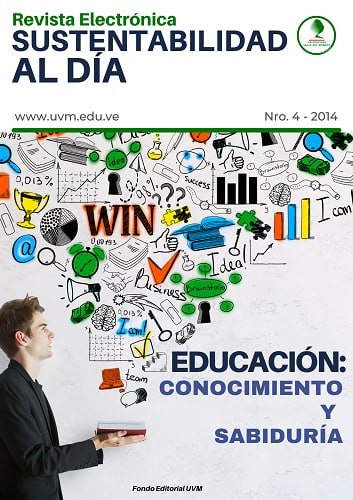Evaluation of the strategies and technics used by teachers to modify disruptive behaveviors.
Keywords:
evaluation, techniques, strategies, disruptive behaviorAbstract
This research paper had as a primordial objective to value e the strategies and techniques used by teachers in order to modify disruptive behaviors in students of fifth year high school course in “U. E. Manuel Torrealba Ramos”, placed in Curarigua, Torres Council in Lara State. The current studio is framed in a descriptive-evaluative investigation with field design. The model CIPP defined by Stufflebeam (1995) was used do the evaluation, taking into account only the process phase. Population was formed by 11 teachers, a universal sample because it is a finite one, able to be studied all in easy way. Direct observation and inquiry were the used techniques in collecting data to evaluate strategies and techniques utilized in modifying students’ disruptive behaviors. Analysis result was also descriptive and evaluative; they give the necessary information to put into practice strategies and techniques which solve the problem. In conclusion, the searcher can say there is a necessity of a training and refresher program to improve the application of students’ harmful behavior’s control to have a normal class development. It is recommended to refresh teacher in this kind of strategies to permit class’s process flow normally.
References
Arias, Fidias G. (2006). Proyecto de Investigación: Introducción a la metodología científica. (5ª ed.) Caracas: Episteme.
Definición Técnica Diccionario Disponible en linea: Disponible en: http://www.alegsa.com.ar/Dic/tecnica.php[Consulta, Agosto 8, 2013]
Díaz Aguado, M. J.; Martínez Arias, (2002). Génesis y desarrollo de los comportamientos de los jóvenes con problemas de conducta en centros de menores. Madrid: Ministerio de Trabajo y Asuntos Sociales
Diccionario de la Lengua Española (2010) - Vigésima segunda edición (en línea) disponible en: http://lema.rae.es/drae/?val=conducta [consulta 2013, Julio 10]
Fidias G, Arias. "El Proyecto de Investigación, introducción a la metodología científica". edt: Episteme,c.a. 5ta edición. Caracas, Venezuela. 2006.
Giusti, E. (2005). Conducta Disruptiva, TDA/H y Manejo Parental. Recuperado el 18 de septiembre de 2013, de http://www.depsicoterapias.com/articulo. asp?Id Articulo=13
Meneses, G. (2.004) NTIC, interacción y aprendizaje en la Universidad. Trabajo de investigación para obtener el DEA. Tarragona: Universitat Rovira I Virgilia.
Olivares, J. y Méndez, F.X. (2001). Técnicas de modificación de conducta. Madrid: Biblioteca Nueva.
Otero-López, J. M. (2001). Consumo de drogas y comportamientos delictivos en la adolescencia. En C. Saldaña (Dir.), Detección y prevención en el aula de los problemas del adolescente (pp.179-212). Madrid: Pirámide
Palella,Martins. 2006."Metodología de la Investigación Cuantitativa" edt.
FEDUPEL. Caracas,
Sanguineti N. (2008). Estrategias. [Documento en Línea]. http://www. estra tegia.com/ unarticulo php?id=A24918503. [Consulta: 2013,Julio 11].
Sierra Bravo, R. (1991 b.). Técnicas de investigación social (7 ed.). Madrid: Paraninfo.
Stufflebeam, D. L & Shinkfield, A.J. (1989), Evaluación Sistemática: Guía Teórica y Práctica. Barcelona: Paidós.
Stufflebeam, Daniel "Evaluación sistemática. Guía teórica y práctica".
Barcelona, Edit Paidós, 1987 (1era edición). 381 pp.
Universidad Pedagógica Experimental Libertador, (2006). Manual de Trabajos de Grado de Especialización y Maestría y Tesis Doctorales. (4ª ed.). Caracas: Autor.
Downloads
Published
How to Cite
Issue
Section
License
Copyright (c) 2014 Sustentabilidad al dia

This work is licensed under a Creative Commons Attribution 4.0 International License.
You are free to:
- Share — copy and redistribute the material in any medium or format for any purpose, even commercially.
- Adapt — remix, transform, and build upon the material for any purpose, even commercially.
- The licensor cannot revoke these freedoms as long as you follow the license terms.
Under the following terms:
- Attribution — You must give appropriate credit , provide a link to the license, and indicate if changes were made . You may do so in any reasonable manner, but not in any way that suggests the licensor endorses you or your use.
- No additional restrictions — You may not apply legal terms or technological measures that legally restrict others from doing anything the license permits.







